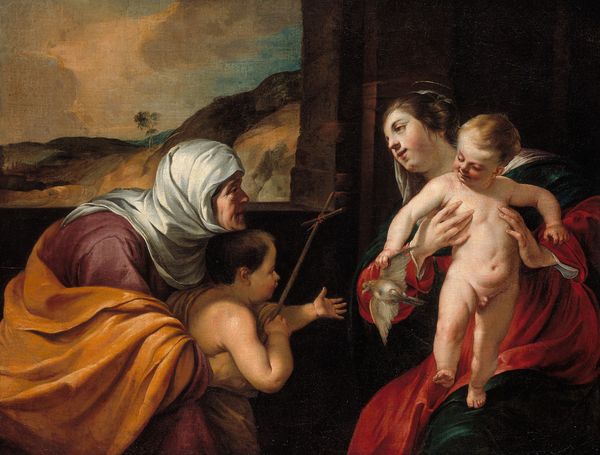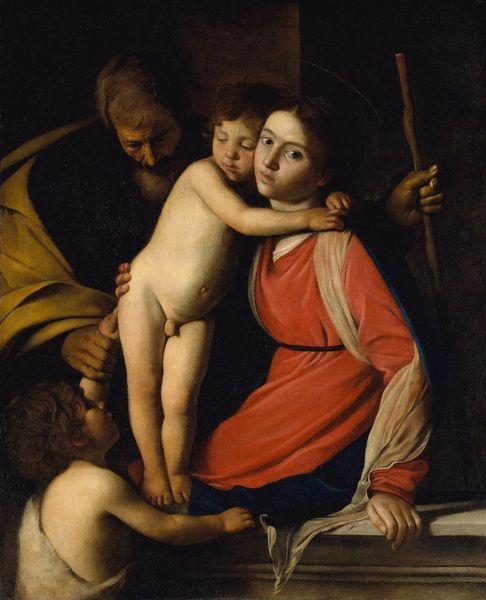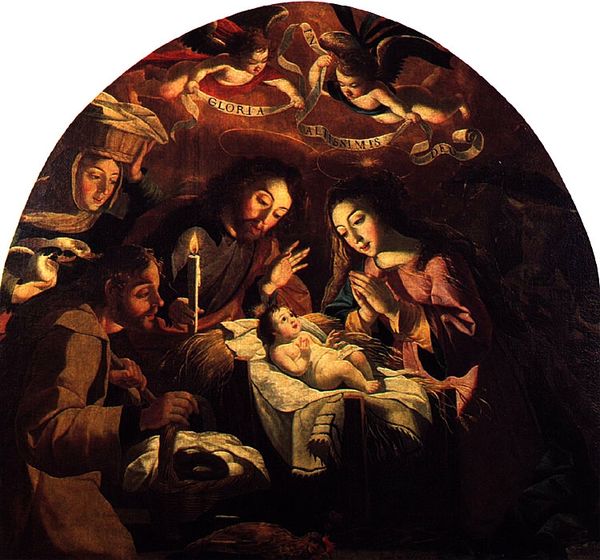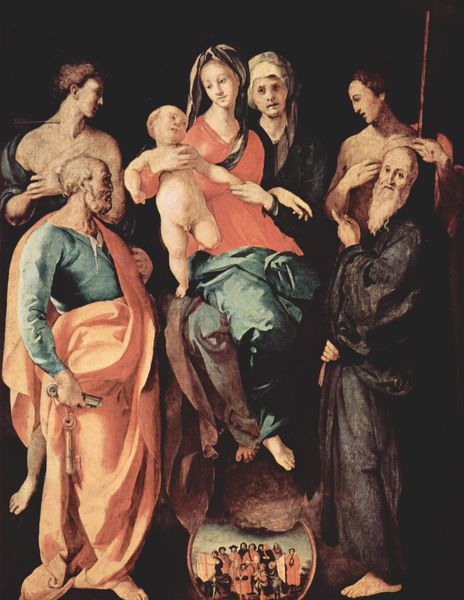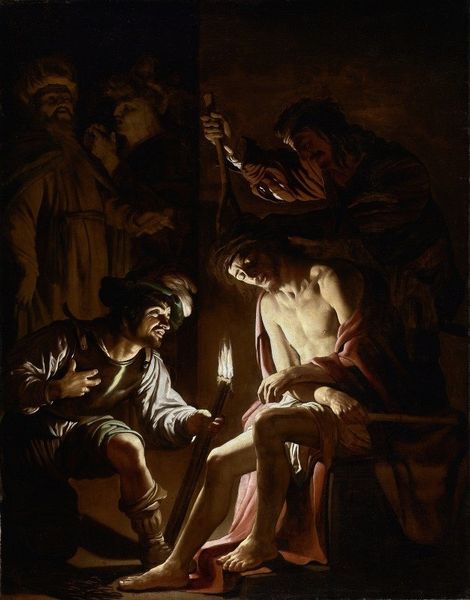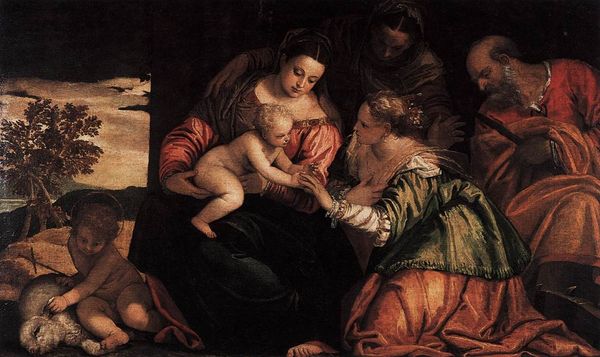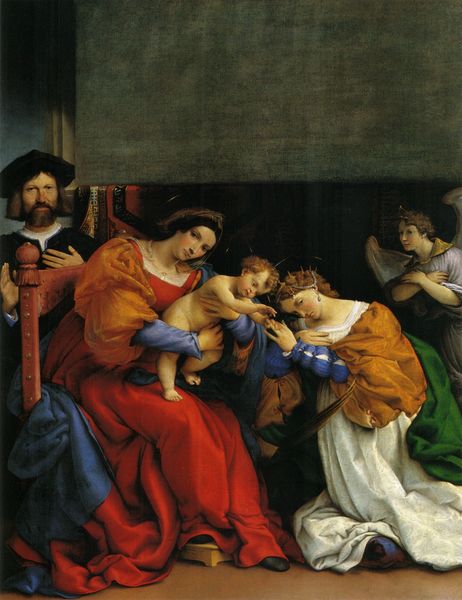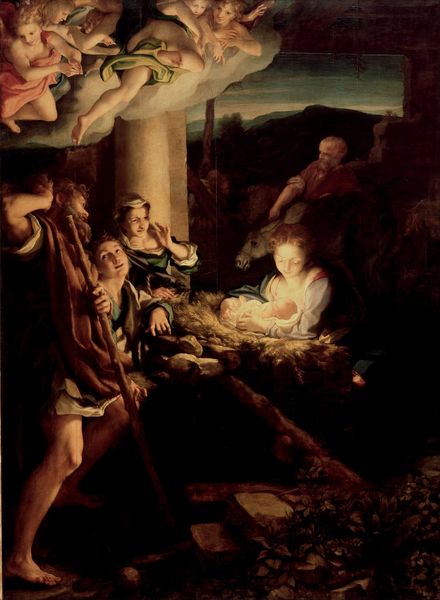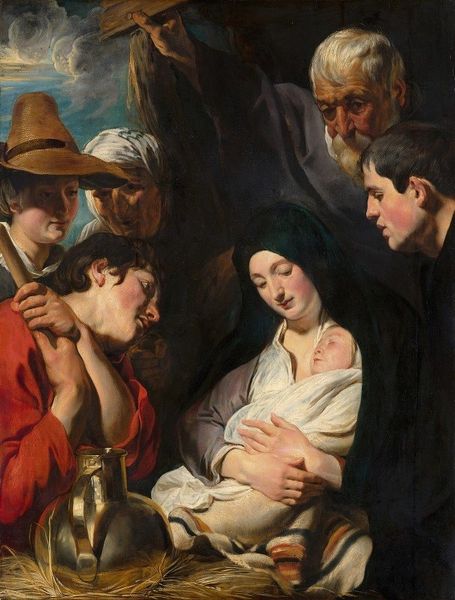
painting, oil-paint
#
portrait
#
narrative-art
#
baroque
#
painting
#
oil-paint
#
figuration
#
madonna
#
oil painting
#
christianity
#
history-painting
#
italian-renaissance
#
virgin-mary
Dimensions: 260 x 150 cm
Copyright: Public domain
Editor: Here we have Caravaggio's "Madonna of Loreto," painted in 1604, an oil painting currently housed in the Basilica of Sant'Agostino in Rome. I’m immediately struck by the contrast – the idealized Madonna and Child against these... working-class pilgrims? How should we interpret that choice? Curator: Precisely! Caravaggio was often criticized for his naturalistic depictions, especially his casting of religious figures. Instead of ethereal beings, we see the Virgin Mary seemingly stepped out of everyday Roman life. It challenges the expected iconography. Do you think this choice enhanced or detracted from the public’s reception? Editor: It's bold. Did his contemporaries see it as subversive? Curator: Absolutely. Remember the Counter-Reformation, with its emphasis on clarity and emotional connection with the divine. While Caravaggio's realism appealed to some, others saw it as vulgar. He was blurring the lines between the sacred and the profane. Look at the bare feet of the pilgrims – a symbol of their poverty, devotion, and journey. Editor: I see it. He is using the figures’ realism to create that emotional connection rather than detract. What statement do you think Caravaggio was trying to make? Curator: Perhaps not so much a *statement* as a reflection of the social landscape. Caravaggio was working in a city teeming with poverty, pilgrimage, and intense religious fervor. He used his art to give these often-ignored populations a place within religious art, and in turn, a place within society. This democratization is not overtly political but rather a mirroring of society and time. What do you make of that idea? Editor: That it's a compelling and socially conscious commentary disguised as a devotional painting. It gives you a real feel for society. Thank you for the perspective. Curator: And thank you for helping me see it afresh! The painting's enduring power is that it allows each viewer to examine both art history and current society through its brushstrokes.
Comments
No comments
Be the first to comment and join the conversation on the ultimate creative platform.
